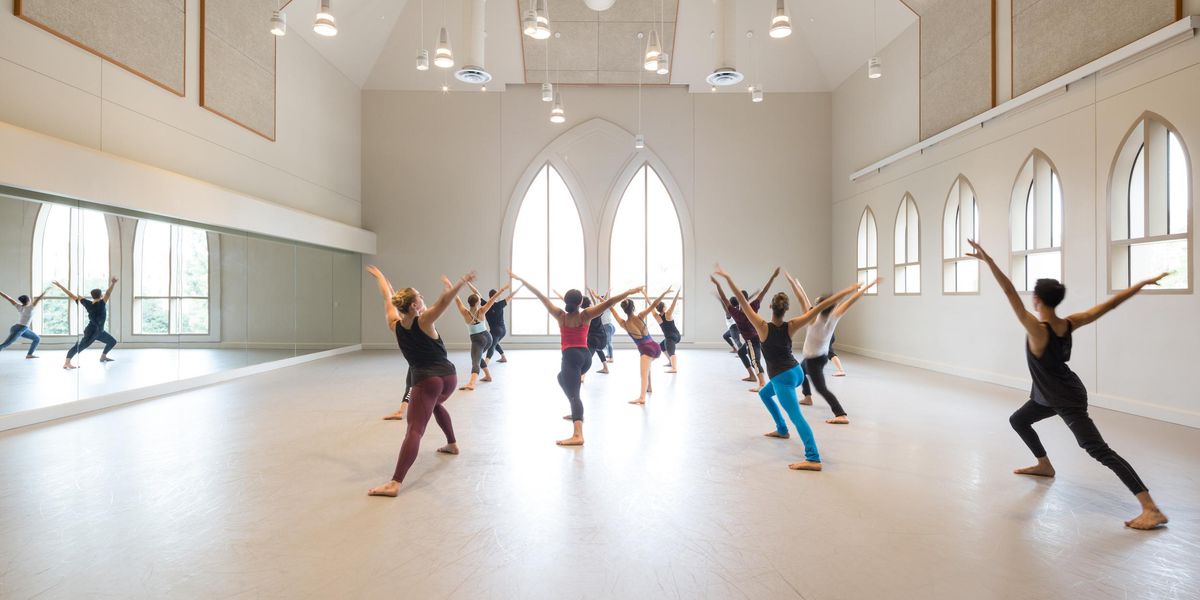Learning Curves: Snappy Spots
Darla Hoover stands at the front of the dance studio, holding a large red exercise ball as a student practices fouettés. Using the ball as a focal point, the dancer finds it with her eyes each time she completes a rotation. “Spotting is very difficult for her, but having that target really helps,” says Hoover, the associate artistic director of Ballet Academy East in New York City. “After she gets a good sense of bringing her head around, I’m able to fine-tune the rest.”
At right: Former BAE student Laura Wolfe Hunt, now at Kansas City Ballet. Photo by Erin Baiano for
DM.
In pirouettes or other turning steps, spotting requires you to snap your head around faster than the rest of your body, letting you focus on one “spot” to reduce dizziness. The technique was developed in the late 19th century when classical ballet began to emphasize virtuosity, with dancers doing multiple pirouettes on pointe. The trend continues in today’s dance world where lightning-fast codas and a dazzling number of turns can ignite an audience.
Students typically learn to spot at an early age, when it’s easier to pick up the coordination and sense of timing. But what if you’re not a natural turner? It’s never too late to improve the mechanics and find a way that works for you.
Increasing mobility
If you feel too disoriented to finish a turning sequence, signs may point to spotting trouble. Maybe you are falling out of pirouettes, your turns have a jerky rhythm, or you carry so much tension in your neck that you can’t do multiples. Simple exercises can fix these problems and help you regain your focus. “Face the mirror and begin to turn your body without turning your head,” Hoover says, “then snap your head around to face front again.” If Hoover is working with someone who drops her chin, she’ll guide the dancer’s head with her hands and do it over and over for muscle memory. She also suggests aiming chaînés straight downstage, spotting the mirror, so dancers can find their eyes each time they turn. She’s even encouraged students to sit on a spinning stool to practice quick, consecutive rotations.
Shannon Bresnahan, a teacher at San Francisco Ballet School, tells her students to practice a series of half pirouettes from fifth, leaving their heads behind as long as they can before finishing. “Once they get a good sense of focus, we graduate to full pirouettes,” she says. Soutenu turns, Bresnahan offers, are other steps to work on spotting: Instead of worrying about balancing on one leg, you can experience turning and concentrate on using your head.
Improving focus
Many students have trouble finding their focus—looking at a spot and coming back to it each time. (Perhaps the target is too small or the stage lights are too bright and make it difficult to see.) Another reason could be poor vision. Hoover has sent many students to an eye doctor after she sensed that they had a problem. “They come around and can’t see anything,” she says. “They don’t realize that there should be
clarity.”
Nicolas Blanc, ballet master at the Joffrey Ballet in Chicago, danced his entire career with a sight deficiency, unable to see well out of his right eye. “What helped me was having a very good sense of alignment and internal balance,” he says. “When I was turning, because one eye didn’t see much, I started to bend my head over and was totally crooked.” Blanc would visualize his left ear over his left hip (if he was turning to the right), and this imagery fixed his alignment, loosened his neck, and helped his spotting. He also practiced turning with his eyes closed to find a sense of internal balance. “In my mind, I could see my spine in the center of my body like a stick and I was turning around that stick,” Blanc says. “It’s not always by the book. Dancers have to find a way to make it work for them.”
Different turns, different approaches
Every turn has an intrinsic rhythm, and how you spot depends on its tempo, coordination, and direction. For instance, a coda fouetté turn is sharp and quick, requiring a supple neck and a crisp spot. “You’re going to gain speed by the rotation of the head,” says Blanc. On the other hand, an adagio en dedans pirouette in back attitude requires less intense spotting—you run the risk of distorting the line by leaving your head too long. Blanc found success in that turn by following the advice of his teacher at the Académie de Danse Princesse Grace. He said to spot twice in that attitude turn: one look to the front corner and another look to the opposite diagonal. “I would stay far more on balance using several spots, which was really odd,” he admits.
And for the turns that begin in one corner and end facing another, Bresnahan suggests spotting in the direction you’re going to finish. “But it depends on what the choreographer and director want,” she says. Balanchine famously asked his dancers to spot front, even when they traveled to the side. “It’s a completely different feeling, but you just have to practice,” says Bresnahan. “Dancers today have to be malleable and able to do everything.”
Julie Diana is a principal dancer with Pennsylvania Ballet. She has a BA in English from the University of Pennsylvania.




